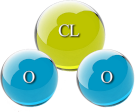Protocol K
K) KIT; IN COMBINATION WITH DMSO
● Protocol K = CDS (0.3% = 3000 ppm) combined with DMSO at 70%.
Always perform an allergy test on the patient before using DMSO. Apply a few drops of 70% DMSO on the forearm and wait for it to dry. In some rare cases, the person may manifest allergy symptoms.
It is normal to feel a slight stinging as blood circulation is activated. This can be counteracted by rinsing or using protocol D.
Application protocol: Excellent for most skin conditions such as acne, psoriasis, eczema, athlete's foot, wounds, painful areas, or where deep treatment is desired. CDS is first applied undiluted to cleanse and is allowed to dry; then DMSO is applied at 70% (50% if from the waist up), allowed to dry, and finally, we finish with undiluted CDS (3000 ppm) directly on the skin. It can be applied every hour if necessary, 5 to 8 times a day.
If DMSO is 99.9%, it should be diluted with 30% distilled water. Applying CDS after DMSO increases the depth of penetration into the skin or body area being treated, although it loses some efficacy. This protocol is very useful when injection is not possible. DMSO should be kept at room temperature and freezes at -18°C and above but can be used without issue after thawing. In case of large-scale treatment, the treated skin areas should be alternated every hour. This procedure is performed for 3 days a week, followed by a 4-day regeneration period for the skin. If dryness occurs after prolonged treatment, coconut oil, extra virgin olive oil, or aloe vera can be applied afterward. If excessive dryness and irritation appear, reduce the concentration or take a break from the treatment.
PRECAUTIONS: Always perform a skin tolerance test for DMSO and never use rubber, PVC, acrylic, ABS, or PET dropper bottles or rubber gloves, as they could be affected by DMSO, which is a solvent and will transport them through the skin (!). Suitable bottles for use in this case are glass, PE, or HDPE (white plastic).
Do not use DMSO in enemas. It is crucial that the area to be treated is perfectly clean, free of perfumes, oils, and other substances before starting the treatment. The application can be done with a natural bristle brush, by hand, or with an atomizer. Never use gloves or other plastic products, as they can dissolve particles and penetrate the skin. After the treatment, it is preferable to wear white clothes (or white bandages, white bed linen) to prevent color from affecting the skin.
